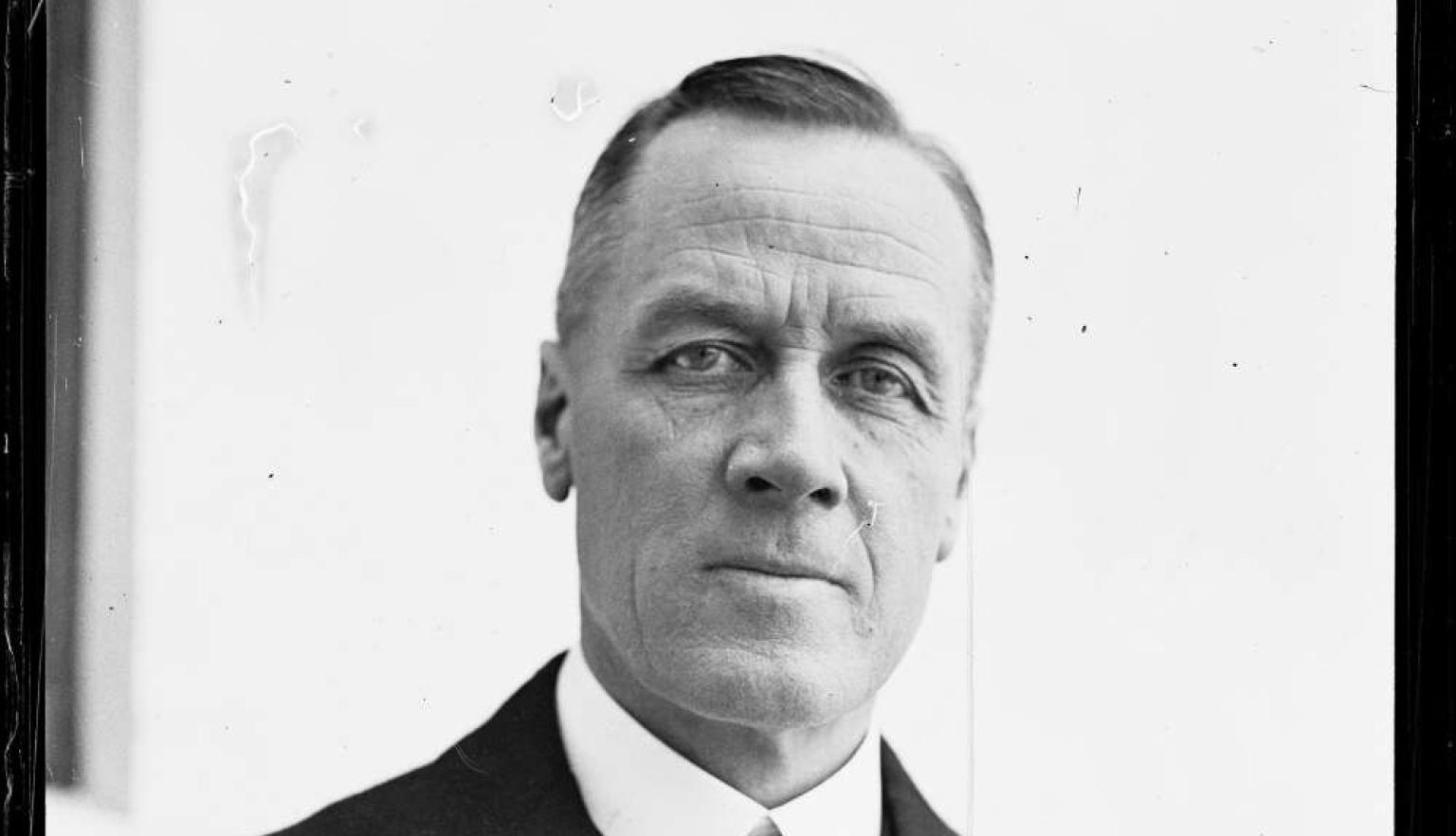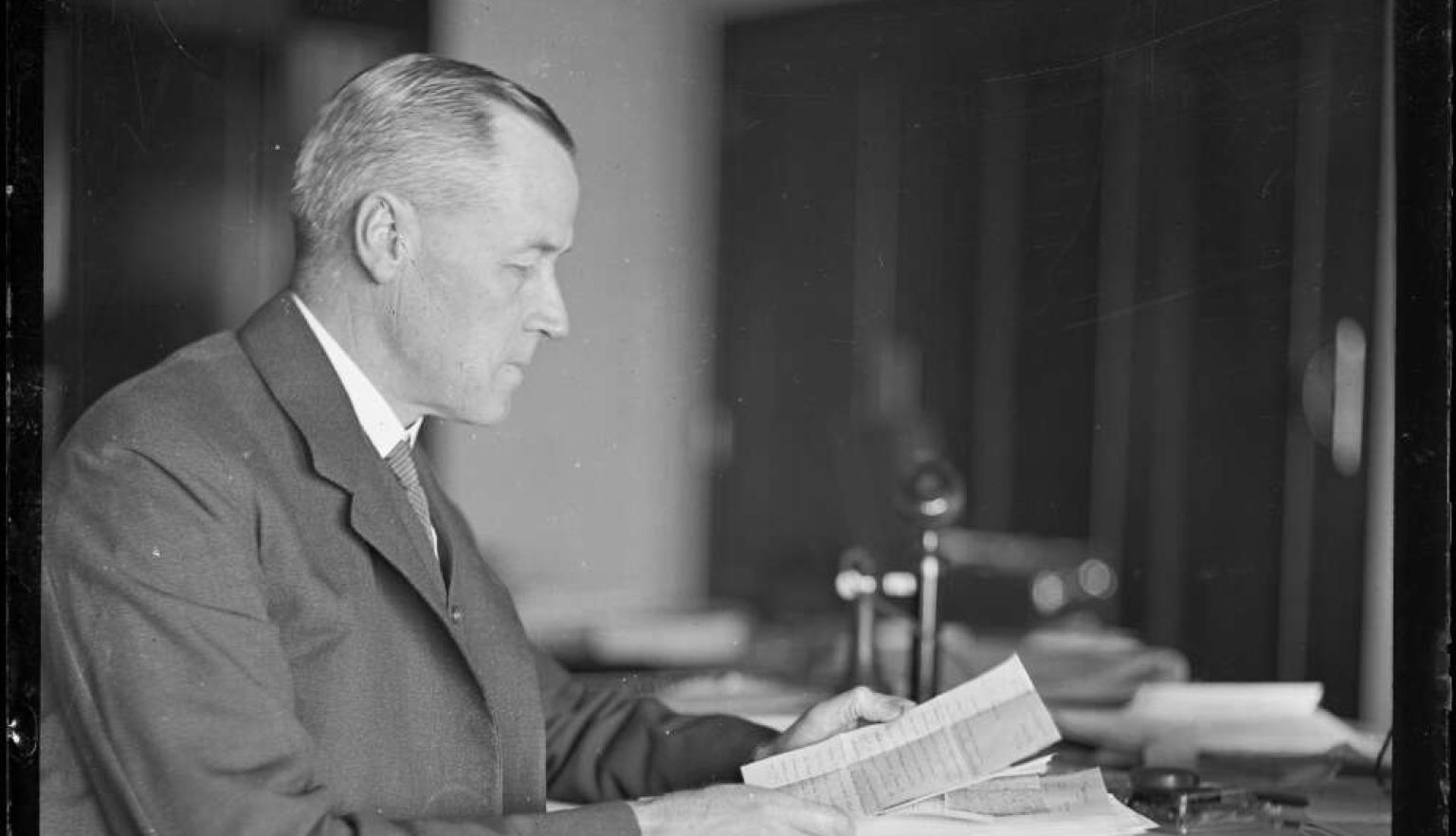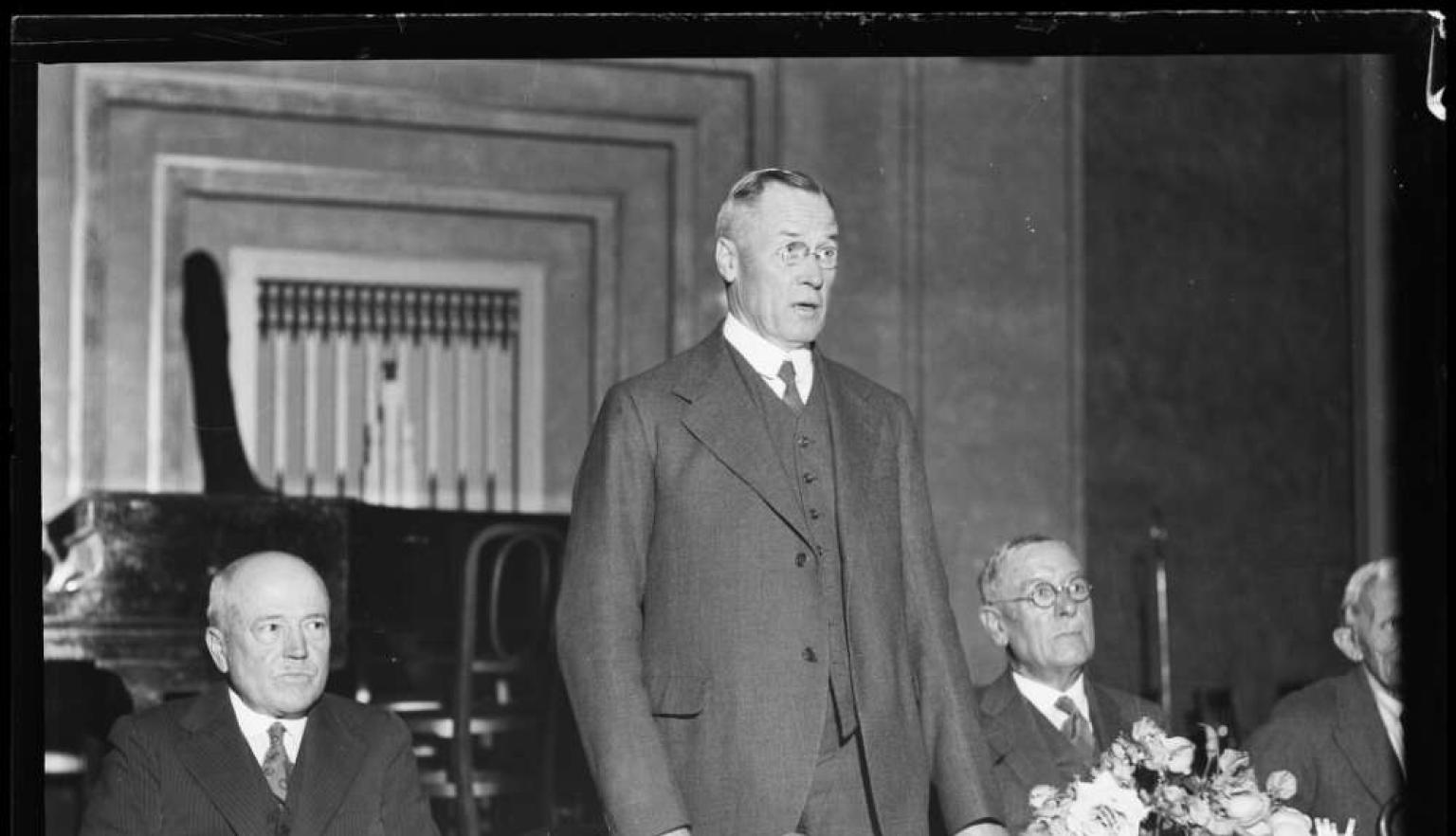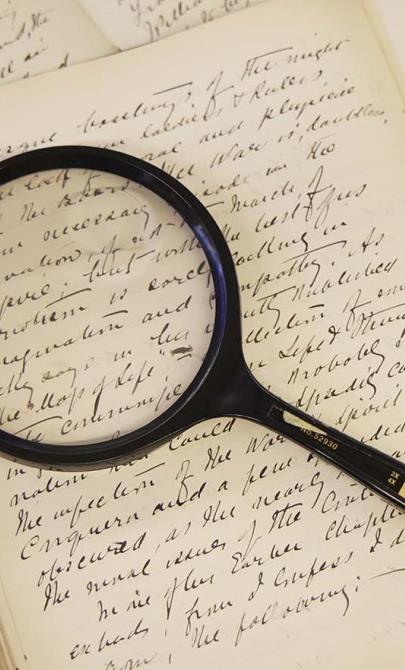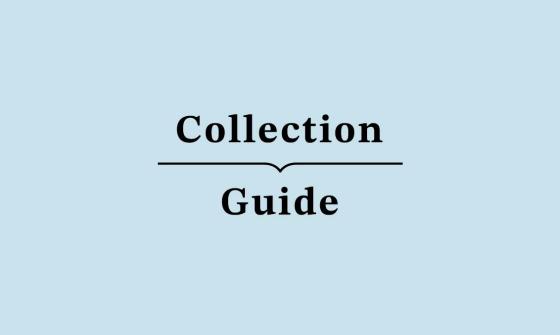Latham Collection
Collection highlights
Key items in the collection
Highlights from this collection demonstrate its historical significance and variety.
The papers of Sir John Latham form one of the finest and most comprehensive personal archives of an Australian public figure. It extends from 1885 to 1964, has a huge correspondence and the range of subject matter is quite extraordinary. Ever since it was arranged and listed in the early 1970s, it has been one of the two or three most heavily used manuscript collections in the Library.
The papers include:
- correspondence
- family and personal documents
- notes
- speeches
- diaries
- minute books
- account books
- newspaper cuttings
- photographs
- pamphlets
- invitations
- menus
- programs
- receipts
- maps
- tourist publications
Most of the papers date from 1900 onwards, although there are many family and personal letters of the 1890s. Particular strengths include:
- Latham’s first overseas trip in 1918–19
- his political career (especially his work as Attorney-General, Leader of the Opposition and Deputy Prime Minister)
- his early years as Chief Justice
- his various activities in retirement between 1952 and 1961.
There are some weaknesses. There is relatively little on his work as a young man, as a teacher, barrister and university lecturer, or on his time in Japan in 1940–41 (his despatches are held in the National Archives of Australia). More surprisingly, the papers of the early and mid-1940s are rather meagre and it must be assumed that many were destroyed, accidentally or otherwise. There is, for instance, almost nothing on the death of his son Richard while serving in the Royal Air Force in 1943.
The papers are a major source on Australian public life over a period of 50 years. With one exception (Andrew Fisher), there are letters from every Australian Prime Minister from Alfred Deakin to John Gorton. Among the politicians, public servants and judges who figure prominently in the papers are:
- Sir Thomas Bavin
- Lord Bruce
- Lord Casey
- Percy Deane
- Sir Owen Dixon
- Sir Frederic Eggleston
- HV Evatt
- Sir Robert Garran
- Sir Henry Gullett
- W.M. Hughes
- JA Lyons
- Sir Robert Menzies
- Sir Keith Officer
- Sir Earle Page
- Sir Archdale Parkhill
- Sir George Pearce
- Sir George Rich
- Sir Hayden Starke
- Sir William Webb
The subjects dealt with include:
- World War I
- Conscription
- Paris Peace Conference
- League of Nations
- Industrial disputes and arbitration
- Threat of communism
- Interpretation of the Constitution
- Federal–state relations
- Public finance
- Relations with Britain and other countries in the British Empire
- Disarmament and the rise of Nazi Germany
- Relations with China, Japan and other Asian countries
- Conduct of High Court business
- Australian immigration policy
The papers are also an important source on Melbourne life. They range from letters from constituents in the electorate of Kooyong to correspondence with prominent figures such as:
- HW Allen
- Sir James Barrett
- Herbert Brookes
- Sir Charles Lowe
- Sir John Medley
- Sir Keith Murdoch
- Sir George Paton.
There are many papers on Melbourne and Victorian institutions, especially Melbourne University, and on bodies such as:
- the Boobooks
- the Round Table
- the League of Nations Union.
There are also letters from men whom Latham had known in Melbourne in his young days, such as:
- Sir Walter Murdoch in Perth,
- Sir Kerr Grant in Adelaide,
- BA Levinson
- Sir Thomas Dunhill in England.
The collection is strong in family papers, including a large number of family photographs. There are many letters from Ella Latham, written when Latham was away interstate or overseas, and from his three children when they were young. His eldest son, Richard Latham, who became a distinguished legal scholar, lived overseas from 1930 onwards and wrote regularly to his parents. There are also letters from Latham’s parents and his sister and four brothers.
Latham typed many of his letters and kept copies, so there are thousands of his own letters among his papers. In addition, letters written by him can be found in the following collections held in the Library:
- Papers of Sir George Pearce, politician
- Papers of Sir Littleton Groom, politician
- Papers of Sir Frederic Eggleston, politician and diplomat
- Papers of King O’Malley, politician
- Papers of Sir Thomas Bavin, politician and Premier
- Papers of EL Piesse, lawyer and public servant
- Papers of H.B. Higgins, judge
- Papers of Vance and Nettie Palmer, writers
- Papers of WM Hughes, politician and Prime Minister
- Papers of Alfred Deakin, Prime Minister
- Papers of Sir Earle Page, politician and Prime Minister
- Papers of Herbert Brookes, businessman
- Papers of Sir Robert Garran, public servant
- Papers of Sir Keith Officer, diplomat
- Papers of Sir Robert Menzies, politician and Prime Minister.
A large number of photographs of Latham, his family and associates are held in the Library. The family photographs include portraits of his parents, wife and children and group photographs of his siblings. There are photographs of Ormond College and lacrosse and cricket teams in the early years of the 20th century, fishing and camping holidays, England and France in 1918–19, political colleagues and social functions that he attended in his later years.
About John Latham
Sir John Greig Latham (1877–1964) was born in Melbourne and educated at Scotch College and the University of Melbourne. He taught for two years at Hamilton Academy and was called to the Bar in 1904. Progress was slow, but by 1914 he had become one of Melbourne’s leading barristers, regularly appearing before the Supreme Court and later the High Court.
From 1907 to 1910, Latham was a part-time lecturer in philosophy, and from 1910 to 1920 he lectured part-time in law. He was active in rationalist organisations, serving as secretary of the Education Act Defence League for seven years, and was a member of the Round Table, the Imperial Federation League and the Boobooks. He also represented the Standard (London) newspaper in Australia.
World War I and early public service
In 1917, Latham was put in charge of naval intelligence. The following year he attended the Imperial Conference in London as adviser to Sir Joseph Cook, and in 1919 served as assistant secretary to the British Empire Delegation at the Peace Conference in Paris.
Political career
After returning to Australia, Latham resumed his legal practice while promoting the League of Nations through speeches and publications. At the 1922 Federal election, he won the seat of Kooyong as an independent Liberal and held it until 1934. He helped bring about the downfall of Prime Minister W.M. Hughes in 1923.
In 1925, Latham was appointed Attorney-General in the Bruce–Page Government, becoming one of its most influential members. He attended the League of Nations General Assembly in 1926 and played a central role in major industrial disputes in 1928–29. After the Government’s 1929 defeat, he became Leader of the Opposition but stood aside in 1931 for J.A. Lyons, serving in Lyons’ United Australia Party government as Deputy Prime Minister, Attorney-General, Minister for External Affairs and Minister for Industry.
In 1932, Latham attended conferences in Geneva and Lausanne and, in 1934, led a goodwill mission to China, Japan and South-East Asia.
Judicial career
Latham retired from politics in 1934, was knighted, and briefly returned to the Bar before being appointed Chief Justice of the High Court in 1935. His tenure included involvement in landmark constitutional cases such as Burgess’ Case (1936), the first Uniform Tax Case (1942), the Bank Nationalization Case (1948) and the Communist Party Case (1951).
In 1940, legislation enabled him to serve as Australia’s first Minister to Japan. His posting ended in September 1941 due to illness and the outbreak of war. Latham retired from the High Court in 1952.
Other roles and public life
Beyond the Court, Latham was Chancellor of the University of Melbourne (1939–41) and, in the 1950s, president of organisations including the Australian Congress for Cultural Freedom, the Australian Elizabethan Theatre Trust, the Library Association of Australia and the Australian–American Association.
Legacy
A lifelong rationalist, Latham was described by Zelman Cowen as “very hardworking, unyielding, testing with the prod of logic and recoiling when the test did not prove satisfactory.” Although lacking popular appeal and leadership charisma, he came close to being Prime Minister, was a powerful Minister, served as Chief Justice for 17 years—the second longest tenure in the Court’s history—and influenced Australian public life for four decades.
Background to the collection
The bulk of the Latham papers were given by Sir John Latham in 1963, a few months before his death.
Further papers, which had been in the possession of his son, Peter Latham, were purchased from book dealers in 1974 and 1996.
In 1981, a relative, Mrs S Humphrey of Melbourne, donated a collection of family papers and letters received by Latham when he was a young man.
The papers of Sir John Latham are held in 113 boxes and four folio boxes in the Manuscripts collection. Use the finding aid.
The family papers which comprise of the papers received from Mrs S Humphrey in 1981 is also held in the Manuscripts collection. An index to the extensive correspondence is shelved in the Special Collections Reading Room.
Most of the photographs are filed with the papers, especially the family papers, but a small number are housed in the Pictures collection.
The National Archives of Australia holds some papers of Latham, mainly relating to his overseas trip in 1926. It also holds the despatches that he wrote as Minister to Japan in 1940–41 (A4231/2 1941/Tokyo).
This guide was prepared using these references:
- Zelman Cowen, Latham, John Greig, in Tony Blackshield, Michael Coper and George Williams (eds), The Oxford Companion to the High Court of Australia, Oxford University Press, Melbourne, 2001, pp. 419–21.
- Zelman Cowen, Sir John Latham and Other Papers, Oxford University Press, Melbourne, 1965.
- Stuart Macintyre, Latham, Sir John Greig (1877–1964), Australian Dictionary of Biography online
- John R Williams, John Latham and the Conservative Recovery from Defeat, 1929–31, Australasian Political Studies Association, Sydney, 1969.
